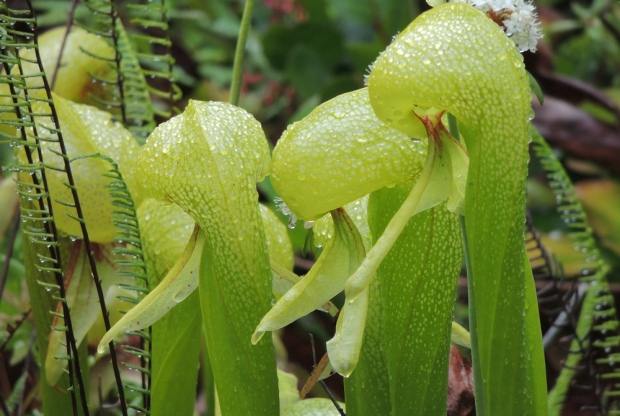Darlingtonia californica has several common names, including the California pitcher plant, cobra lily, and cobra plant. It is a member of the Sarracenia family, along with other types of North American pitcher plants. As the common names suggest, the distinctive feature of Darlingtonia californica is the appearance of its pitchers: a translucent hood over the top resembles a cobra’s head, and the forked leaf is like its tongue. Hoods may be red, green, or a combination of both colors. A fully-grown Darlingtonia californica can grow up to three feet tall.
This plant is native to the northwestern part of the United States, specifically the cold water bogs of coastal Oregon and northern California. Like other carnivorous plants, Darlingtonia californica grows in a nutrient poor environment and feeds on animals to provide vital nutrients (particularly nitrogen) that would not otherwise be available.
